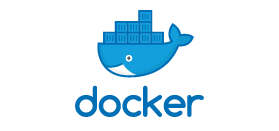Learn more about setting ulimit Values on Docker Container. Our Docker Support team is here to help you with your questions and concerns.
Setting ulimit Values on Docker Container
The `ulimit` is a Linux/Unix utility that defines resource limits for processes running on the system.
These limits ensure that no single process consumes excessive system resources, such as CPU or memory, which could otherwise degrade overall system performance.
 For example, if an application encounters a ulimit restriction, we may see an error like this:
For example, if an application encounters a ulimit restriction, we may see an error like this:
Configuration of maximum open file limit is too low: 1024 (expected at least 32768).
We can easily check the current `ulimit` values on our Linux system with this command:
$ ulimit -aThis command displays all the configured limits, including open files, core file size, and process data segments.
An Overview:
- Understanding ulimit in Docker
- Default ulimit Values in Docker
- How to Set ulimit Values in Docker Containers
- 1. Using the `–ulimit` Option in `docker run`
- 2. Configuring ulimit in a Dockerfile
- 3. Using a Startup Script
- Best Practices for Setting ulimit Values in Docker
- Troubleshooting Common Issues with ulimit in Docker
- Common ulimit Errors and Their Implications
Understanding ulimit in Docker
Did you know that by default, Docker containers inherit `ulimit` values from the host system?
However, custom values can be set specifically for Docker containers, allowing fine-grained control over resource allocation.
Default ulimit Values in Docker
The default values for `ulimit` in Docker depend on our installation. Common examples include:
- Maximum file descriptors (`ulimit -n`): 10,000
- Core file size (`ulimit -c`): 0 (core dumps are disabled)
- Maximum process data size (`ulimit -d`): Unlimited
These values can impact how Docker containers operate, especially for applications with high resource demands.
How to Set ulimit Values in Docker Containers
1. Using the `–ulimit` Option in `docker run`
The `–ulimit` option lets us set custom limits for individual containers during runtime. For instance, to set the maximum number of open files to 20,000:
$ docker run --ulimit nofile=20000 my_image2. Configuring ulimit in a Dockerfile
We can define ulimit values directly in the Dockerfile for all containers built from the image.
For example:
FROM ubuntu
RUN ulimit -n 20000
CMD ["/bin/bash"]
3. Using a Startup Script
For more complex setups, we can use a startup script to configure multiple `ulimit` values or settings not supported in `docker run` or Dockerfile. For example:
#!/bin/bash
ulimit -n 20000
/usr/bin/my_app
We need to include this script in our container and specify it as the startup command:
$ docker run -v /path/to/startup.sh:/startup.sh my_image /startup.sh
This option is handy for custom applications that need multiple adjustments.
Best Practices for Setting ulimit Values in Docker
When configuring ulimit for Docker containers, consider the following best practices:
- Choose values tailored to the application’s needs and the host system’s capacity. Too-low limits may restrict container performance, while excessively high values can degrade host performance.
- Experiment with slightly higher-than-default values and fine-tune them based on application performance. This trial-and-error approach ensures optimal resource allocation.
- Regularly monitor the containers’ resource usage using tools like `top` or `htop` to confirm they operate within the defined limits.
- Setting limits too high might lead to resource contention, negatively impacting the host system and other running containers. Always balance container needs with overall system health.
Troubleshooting Common Issues with ulimit in Docker
- Ensure we are setting valid `ulimit` values for the application. Incorrect configurations may cause containers to fail during startup or encounter resource shortages.
- Some `ulimit` parameters have defined minimum or maximum ranges. Values outside this range can result in unexpected container behavior or failure.
- Modifying `ulimit` may require elevated privileges. If we run into permission issues, use `sudo` to run the Docker commands.
Common ulimit Errors and Their Implications
Misconfigured ulimit values can lead to different errors that impact application performance and system stability. Here are some common errors and their implications:
- Too many open files:
It occurs when the maximum file descriptor limit (ulimit -n) is too low. This can prevent applications from opening new files or network connections. This can be fixed by increasing the file descriptor limit for the process or container.
- Out of memory:
This error occurs when memory allocation exceeds the ulimit -m value. Applications may crash or behave unpredictably. We can fix it by adjusting memory limits to align with application requirements.
- Resource temporarily unavailable:
This error indicates process limits (ulimit -u) are reached, preventing new processes from being created. We can fix it by increasing the process limit for the user or container.
[Need assistance with a different issue? Our team is available 24/7.]
Conclusion
Managing `ulimit` values helps with the smooth operation of both Linux systems and Docker containers. By understanding how `ulimit` works and implementing best practices, we can optimize resource usage while avoiding common pitfalls. Proper configuration not only enhances application performance but also maintains the overall stability of our system.
In brief, our Support Experts introduced us to setting ulimit Values on Docker Container.







0 Comments